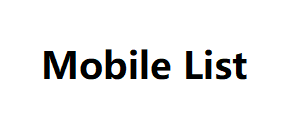Several years ago, I worked in a startup with no marketing budget. No one had any marketing experience either. Being the only person who had read a couple of marketing books, I was put in charge of the marketing strategy. Without any know-how or marketing dollars, I read a couple of SEO blogs and tried implementing their strategies. And it worked. If Google cannot find, crawl, and index your pages, it doesn’t matter what SEO tactics you pull out of the hat. A Basic 5-Step Your pages just can’t rank. So the first step is to make sure Google can do all of the above for your site.
The easiest way to
See if any issues are hindering Google is to audit your website. You can do this by signing up for our free Ahrefs Webmaster Tools (AWT) and using Site Audit to run a executive email list crawl of your website. When the crawl is done, you’ll see all the top issues plaguing your site. Click on the number in the Crawled column to see which URLs these are. Here, you’ll see over 400,000 potential topics. But that’s too many. So you’ll want to reduce the list to something manageable. Specifically, you’ll want to target keywords that can potentially send you tons of traffic but are not competitive. We do this by using two filters: Traffic potential (TP) – TP is the estimated amount of search traffic you can potentially gain if you rank1 for that topic.
We can A Basic 5-Step
Minimum of 100 to find topics that actually send traffic to your site. Keyword Difficulty (KD) – KD gives an estimation of how hard it is to rank in the top 10 search results for Mobile List a keyword. The lower the number, the “easier” it is. While it does depend on your site’s “authority,” you can start with a reasonable number like 20. Google wants its users to be happy. To it, that means figuring out why the searcher is searching —i.e., search intent—and then showing them the most relevant results. So if you want to rank high on Google, you’ll have to match search intent. Fortunately, figuring out search intent is relatively simple. Since Google already works to serve the most relevant results, we can look at the current top-ranking pages to understand search intent.

